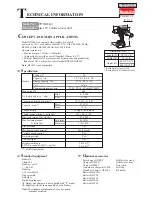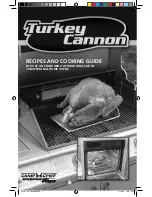
19. Liquid Propane Hook-Up
a) Attach the regulator to the propane cylinder by
routing the regulator hose through the side of
the cart. As shown in Fig. 24.
Note:
Make sure the hose and regulator placing in
the hole of top side panel to connect the tank.
b) Attach the regulator to the propane cylinder by
turning the regulator handle clockwise as shown
in Fig.
25. If the outdoor cooking appliance is not
in use, the gas must be turned “Closed” position
at the Liquid Propane Cylinder.
Check all gas supply fittings for leaks before
each use. Do not use the grill until all connections
have been checked and do not leak
(see “Leak Testing”
instructions on page 18).
INSTALLATION INSTRUCTIONS
Propane Cylinder
Regulator
Fig. 25
Fig. 24
GAS HOOK-UP
Only the pressure regulator and hose assembly supplied with the grill should be used. Any replacement
pressure regulator and hose assembly must be specified by the grill manufacturer.
This grill is configured for Liquid Propane. Do not use a Natural Gas supply.
Total gas consumption (per hour) with all burners set on “HI”:
Main burners 48,000 BTU/Hr.
Side burner
12,000 BTU/Hr.
Total
60,000 BTU/Hr.
The installation of this appliance must conform with local codes or, in the absence of local codes, with
either the National Fuel Gas Code, ANSI Z223.1/NFPA 54, National Gas Propane Installation Code, CSA
B149.2.
Installation in Canada must be in accordance with the Standard CAN/CGA-B149.2 (installation code for
gas burning appliances and equipment) and local codes.
LIQUID PROPANE CYLINDER REQUIREMENTS
(20-lb. Cylinder)
A dented or rusty Liquid Propane Cylinder may be hazardous and should be checked by your supplier.
Never use a cylinder with a damaged valve. The Liquid Propane Cylinder must be constructed and
marked in accordance with the specifications for Liquid Propane Cylinders by the United States
Department of Transportation (DOT) or the National Standard of Canada, CAN/CSA-B339, Cylinders,
Spheres and Tubes for Transportation of Dangerous Goods Commission.
The 20-lb. Cylinder
must have a shut off valve terminating in a valve outlet specified, as applicable, for
connection type QCC1 in the standard for compressed gas cylinder valve outlet and inlet connection
ANSI/CGA-V-1.
17












































